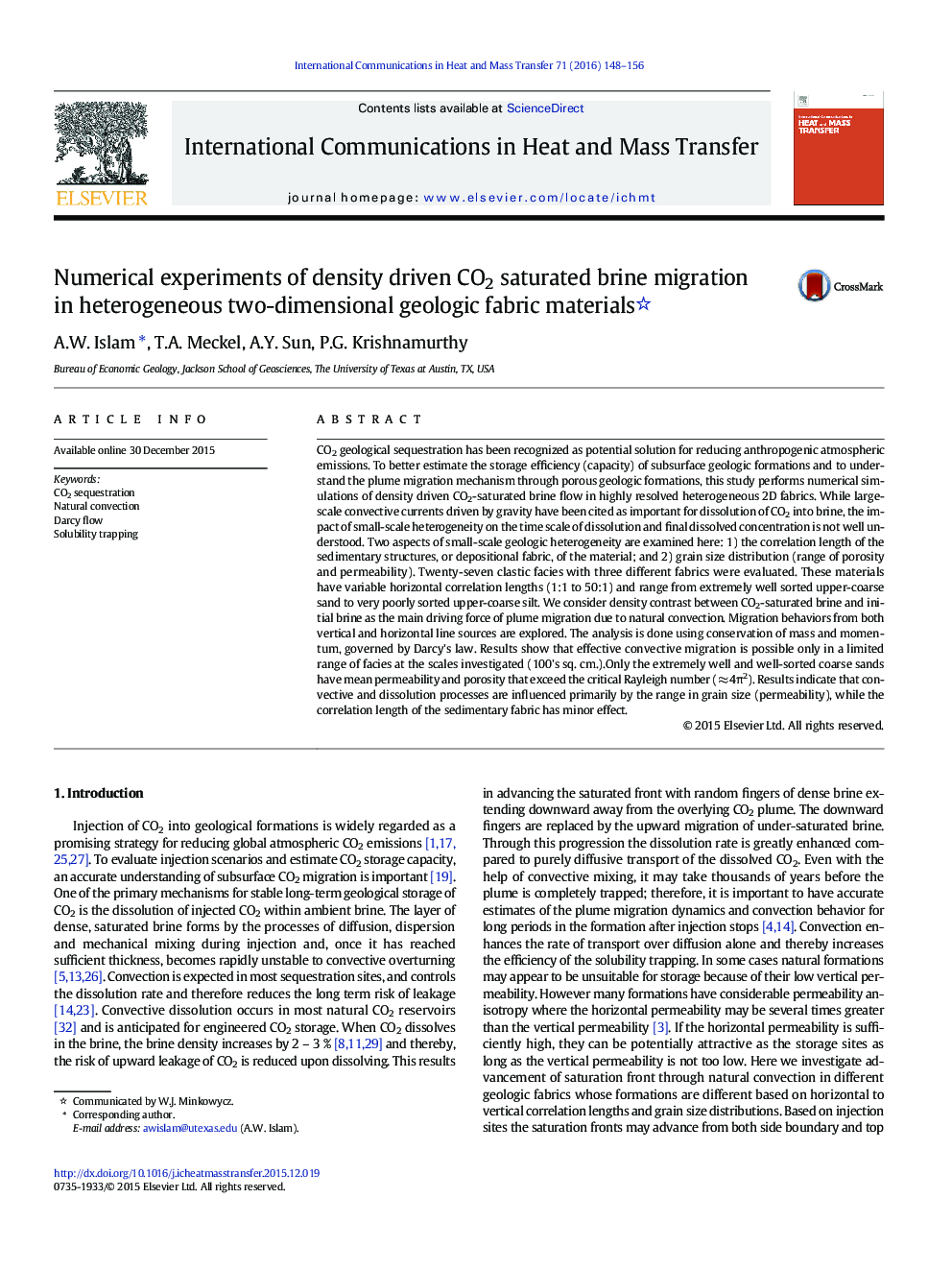| Article ID | Journal | Published Year | Pages | File Type |
|---|---|---|---|---|
| 652942 | International Communications in Heat and Mass Transfer | 2016 | 9 Pages |
Abstract
CO2 geological sequestration has been recognized as potential solution for reducing anthropogenic atmospheric emissions. To better estimate the storage efficiency (capacity) of subsurface geologic formations and to understand the plume migration mechanism through porous geologic formations, this study performs numerical simulations of density driven CO2-saturated brine flow in highly resolved heterogeneous 2D fabrics. While large-scale convective currents driven by gravity have been cited as important for dissolution of CO2 into brine, the impact of small-scale heterogeneity on the time scale of dissolution and final dissolved concentration is not well understood. Two aspects of small-scale geologic heterogeneity are examined here: 1) the correlation length of the sedimentary structures, or depositional fabric, of the material; and 2) grain size distribution (range of porosity and permeability). Twenty-seven clastic facies with three different fabrics were evaluated. These materials have variable horizontal correlation lengths (1:1 to 50:1) and range from extremely well sorted upper-coarse sand to very poorly sorted upper-coarse silt. We consider density contrast between CO2-saturated brine and initial brine as the main driving force of plume migration due to natural convection. Migration behaviors from both vertical and horizontal line sources are explored. The analysis is done using conservation of mass and momentum, governed by Darcy's law. Results show that effective convective migration is possible only in a limited range of facies at the scales investigated (100's sq. cm.).Only the extremely well and well-sorted coarse sands have mean permeability and porosity that exceed the critical Rayleigh number (â 4Ï2). Results indicate that convective and dissolution processes are influenced primarily by the range in grain size (permeability), while the correlation length of the sedimentary fabric has minor effect.
Related Topics
Physical Sciences and Engineering
Chemical Engineering
Fluid Flow and Transfer Processes
Authors
A.W. Islam, T.A. Meckel, A.Y. Sun, P.G. Krishnamurthy,
